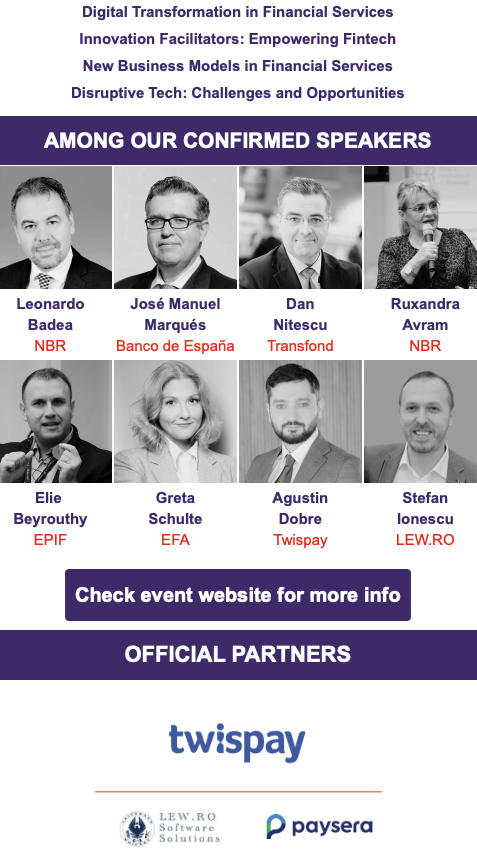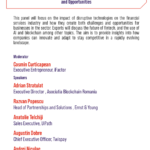PILONUL III. CREȘTERE INTELIGENTĂ, SUSTENABILĂ ȘI FAVORABILĂ INCLUZIUNII, INCLUSIV COEZIUNE ECONOMICĂ, LOCURI DE MUNCĂ, PRODUCTIVITATE, COMPETITIVITATE, CERCETARE, DEZVOLTARE ȘI INOVARE, PRECUM ȘI O PIAȚĂ INTERNĂ FUNCȚIONALĂ, CU ÎNTREPRINDERI MICI ȘI MIJLOCII (IMM-URI) PUTERNICE
COMPONENTA C9. SUPORT PENTRU SECTORUL PRIVAT, CERCETARE, DEZVOLTARE ȘI INOVARE
INVESTIȚIA I3. SCHEME DE AJUTOR PENTRU SECTORUL PRIVAT
MĂSURA 1. SCHEMĂ DE MINIMIS ȘI SCHEMĂ DE AJUTOR DE STAT ÎN CONTEXTUL DIGITALIZĂRII IMM-URILOR
- întreprindere mijlocie – întreprindere care are între 50 și 249 de salariați și realizează o cifră de afaceri anuală netă de până la 50 milioane euro, echivalent în lei, sau deține active totale care nu depășesc echivalentul în lei a 43 milioane euro;
- întreprindere mică – întreprindere care are între 10 și 49 de salariați și realizează o cifră de afaceri anuală netă sau deține active totale de până la 10 milioane euro, echivalent în lei;
- microîntreprindere – întreprindere care are până la 9 salariați și realizează o cifră de afaceri anuală netă sau deține active totale de până la 2 milioane euro, echivalent în lei;
- întreprindere mare – întreprindere care are cel puțin 250 de angajați și realizează o cifră de afaceri anuală netă care depășește 50 de milioane de euro sau active totale care depășesc 43 de milioane de euro, echivalent în lei;
Granturi pentru sprijinirea antreprenorilor în dezvoltarea tehnologiilor digitale avansate cum ar fi: inteligența artificială, datele și cloud computingul, tehnologia blockchain, calculul de înaltă performanță și cuantică, internetul obiectelor, securitatea cibernetică.
Regulamentul (UE) 2021/241 al Parlamentului European și al Consiliului din 12 februarie 2021 de instituire a Mecanismului de redresare și reziliență stabilește ca obiectiv obligatoriu ca cel puțin 20% din alocarea totală a planului să contribuie la tranziția digitală sau la provocările digitale. Strategia Națională privind Agenda Digitală pentru România (SNADNR) a contribuit la asigurarea coerenței și la consolidarea sinergiilor între acțiuni și investiții în diferite domenii ale economiei digitale. Cu toate acestea, efectele implementării SNADNR sunt minime.
Digitalizarea are un impact profund și generalizat asupra tuturor aspectelor societății și ale economiei: producția, distribuția, consumul, muncă și timpul liber. IMM-urile sunt supuse unei presiuni din ce în ce mai mari, în vederea adaptării în consecință a modelelor proprii de afaceri și a adoptării tehnologiilor digitale necesare, astfel încât clienții să le considere în continuare competitive și atractive. În acest context, Uniunea Europeană a Artizanatului și a Întreprinderilor Mici și Mijlocii (UEAPME) a definit digitalizarea drept cea mai mare provocare pentru majoritatea IMM-urilor europene
Digitalizarea are multiple beneficii. IMM-urile își pot crește competitivitatea prin raționalizarea și accelerarea proceselor din etapa de concepere până în etapa de livrare, pot să își extindă accesul pe piață și integrarea lanțului valoric prin intermediul platformelor digitale și pot să îmbunătățească relațiile cu clienții utilizând platformele de comunicare socială și serviciile digitale pentru clienți. În plus, digitalizarea poate permite IMM-urilor să inoveze, oferind noi produse sau servicii digitale sau lărgindu-și gama existentă de servicii cu servicii digitale suplimentare.
Digitalizarea duce la apariția unor noi modele de organizare a muncii în cadrul IMM-urilor. Adoptarea unor modalități de lucru inovatoare, care să implice într-o anumită măsură munca de la distanță și care să ofere o autonomie mai mare angajaților prin crearea unui echilibru mai bun între viața profesională și cea privată, poate răspunde nevoilor managerilor și angajaților, adesea obligați, în cazul întreprinderilor mai mici, să își asume numeroase roluri. Pe de altă parte, ea poate duce la noi forme de instabilitate și de alienare, care implică riscul subminării satisfacției angajaților și a mediilor de lucru din cadrul IMM-urilor.
De asemenea, există o serie de provocări asociate cu digitalizarea. Transformarea digitală a societății, intensificată de criza COVID-19, a extins peisajul amenințărilor și aduce noi provocări, care necesită răspunsuri adaptate și inovatoare. Numărul atacurilor cibernetice continuă să crească, atacurile din ce în ce mai sofisticate provenind dintr-o gamă largă de surse atât din interiorul, cât și din afara UE.
Prin urmare, întreprinderile ar trebui să conducă eforturile pentru o digitalizare sigură și vor împărtăși responsabilitatea în asigurarea unei transformări digitale securizate cibernetice.
O serie de sectoare critice precum transporturile, energia, sănătatea și finanțele au devenit tot mai dependente de tehnologiile digitale pentru a-și desfășura activitățile de bază. Digitalizarea oferă oportunități enorme și asigură soluții pentru multe dintre provocările cu care se confruntă Europa, nu în ultimul rând în timpul crizei provocate de pandemia de COVID-19, dar, în același timp, expune economia și societatea la amenințări cibernetice.
Atacurile cibernetice și criminalitatea informatică sunt tot mai numeroase și mai sofisticate în întreaga Europă. Se preconizează că această tendință va continua să crească în viitor, date fiind previziunile conform cărora 22,3 miliarde de dispozitive la nivel mondial vor fi conectate la internetul obiectelor până în 2024.
| Domeniul de intervenție / tipul de intervenție |
Coeficientul pentru tranziția digitală |
Alocare financiară |
|
| Capacități de calcul de înaltă performanță și de informatică cuantică/capacități de comunicare cuantică (inclusiv criptare cuantică); |
100% |
130 mil. EUR |
|
|
| Proiectarea, producția și integrarea sistemelor în domeniul microelectronicii; |
|
| Următoarea generație de capacități de date, cloud și edge (infrastructuri, platforme și servicii); |
|
| Realitatea virtuală și augmentată |
|
| Tehnologia profundă și alte tehnologii avansate digitale |
|
| Investiții în securizarea lanțului digital de aprovizionare |
|
| Securitatea cibernetică: dezvoltarea și implementarea de tehnologii, măsuri și structuri de sprijin în materie de securitate cibernetică pentru utilizatorii din sectorul public și privat. |
100% |
20 mil. EUR |
|
Activitățile sprijinite în cadrul investiției/operațiunii
Prin intermediul acestei operațiuni vor fi sprijinite:
Investiții în active corporale și necorporale în cadrul unei investiții inițiale care să sprijine întreprinderile în dezvoltarea tehnologiilor digitale avansate cum ar fi inteligența artificială, datele și cloud computing-ul, tehnologia blockchain, calculul de înaltă performanță și cuantică, internetul obiectelor, securitatea cibernetică precum:
- achiziții de active corporale și necorporale (hardware pentru calculul de înaltă performanță și cuantică, echipamente pentru automatizări și robotică destinate fluxurilor tehnologice integrate cu soluții digitale, dezvoltarea și/sau adaptarea aplicațiilor software, inclusiv soluțiile de automatizare software de tip RPA, respectiv Robotic Process Automation);
- achiziții de tehnologii blockchain (ce favorizează în principal industria de producție și lanțul de aprovizionare prin automatizare, planificarea resurselor întreprinderii, schimb eficient de date, IoT (internetul obiectelor), IIoT (internetul industrial al obiectelor), Big Data, Cloud computing și inteligență artificială);
- achiziții de active corporale și necorporale pentru securitatea cibernetică;
- achiziții de sisteme de inteligență artificială, machine learning, augmented reality, virtual reality;
- achiziția de date și cloud computing (cu condiția ca aceste achiziții să poate fi încadrate la imobilizări necorporale);
Investiții în cercetare industrială și dezvoltare experimentală privind dezvoltarea tehnologiilor digitale avansate.
Finanțarea acordată în cadrul prezentului apel de proiecte
(1) Valoarea totală alocată care va fi acordat în cadrul prezentului apel este de 150 milioane euro din cadrul PNRR, împărțită pe următoarele domenii de activitate considerate prioritare la nivel național:
- industrie alimentară, industrie prelucrătoare, construcții: 75 milioane euro.
- industrie auto, transport și distribuție, servicii adresate populației, turism și alte activități/domenii eligibile: 75 milioane euro.
(2) Valoarea finanțării în euro se calculează în lei la cursul de schimb InforEuro valabil la data semnării contractului de finanțare.
Cursul valutar utilizat este cursul Inforeuro aferent lunii aprilie 2023: 1 euro = 4.9483 lei.
Valoare Asistenței Financiare Nerambursabilă pentru întreg proiectul de dezvoltare tehnologii digitale avansate acordată (nu mai mult de 5 ori Cifra de Afaceri pe anul 2022 a liderului de proiect).
Plafonul maxim al finanțării nerambursabile se va determina în funcție de categoria în care se încadrează liderul de proiect, astfel:
- Microîntreprinderi – maxim 500’000 euro;
- Întreprinderi mici – maxim 1.500.000 euro;
- Întreprinderi mijlocii –maxim 3.000.000 euro.
| AJUTOR REGIONAL |
|
| Denumirea regiunii NUTS |
ÎNTREPRINDERI MIJLOCII |
MICRO/ ÎNTREPRINDERI MICI |
|
|
| |
|
| Nord-Vest |
|
|
|
|
| Bihor |
50% |
60% |
|
|
| Bistrița-Năsăud |
60% |
70% |
|
|
| Cluj |
50% |
60% |
|
|
| Maramureș |
60% |
70% |
|
|
| Satu Mare |
60% |
70% |
|
|
| Sălaj |
60% |
70% |
|
|
| Centru |
|
|
|
|
| Alba |
60% |
70% |
|
|
| Brașov |
50% |
60% |
|
|
| Covasna |
50% |
60% |
|
|
| Harghita |
50% |
60% |
|
|
| Mureș |
60% |
70% |
|
|
| Sibiu |
50% |
60% |
|
|
| Nord-Est |
|
|
|
|
| Bacău |
70% |
75% |
|
|
| Botoșani |
70% |
75% |
|
|
| Iași |
60% |
70% |
|
|
| Neamț |
70% |
75% |
|
|
| Suceava |
70% |
75% |
|
|
| Vaslui |
70% |
75% |
|
|
| Sud-Est |
|
|
|
|
| Brăila |
70% |
75% |
|
|
| Buzău |
70% |
75% |
|
|
| Constanța |
60% |
70% |
|
|
| Galați |
70% |
75% |
|
|
| Vrancea |
70% |
75% |
|
|
| Tulcea |
70% |
75% |
|
|
| Sud-Muntenia |
|
|
|
|
| Argeș |
60% |
70% |
|
|
| Călărași |
70% |
75% |
|
|
| Dâmbovița |
60% |
70% |
|
|
| Giurgiu |
60% |
70% |
|
|
| Ialomița |
70% |
75% |
|
|
| Prahova |
70% |
75% |
|
|
| Teleorman |
70% |
75% |
|
|
| Sud-Vest Oltenia |
|
|
|
|
| Dolj |
70% |
75% |
|
|
| Gorj |
70% |
75% |
|
|
| Mehedinți |
70% |
75% |
|
|
| Olt |
70% |
75% |
|
|
| Vâlcea |
70% |
75% |
|
|
| Vest |
|
|
|
|
| Arad |
40% |
50% |
|
|
| Caraș-Severin |
50% |
60% |
|
|
| Hunedoara |
50% |
60% |
|
|
| Timiș |
40% |
50% |
|
|
Solicitanți eligibili:
Formele asociative (parteneriatele*) formate din:
1) Lider (IMM cu activitate non-IT):
Întreprinderi înființate în baza Legii nr. 31/1990 republicată privind societățile, Legii nr. 1/2005 republicată privind organizarea și funcționarea cooperației, respectiv OUG nr. 6/2011 actualizată pentru stimularea înființării și dezvoltării microîntreprinderilor de către întreprinzătorii debutanți în afaceri, aprobată cu modificări prin Legea nr. 301/2011, cu modificările și completările ulterioare și au sediul social în România.
2) Partener (IMM cu activitate IT):
IMM care îndeplinește cumulativ următoarele condiții:
-
-
- înființat în baza Legii nr. 31/1990 republicată privind societățile, Legii nr. 1/2005 republicată privind organizarea și funcționarea cooperației, respectiv OUG nr. 6/2011 actualizată pentru stimularea înființării și dezvoltării microîntreprinderilor de către întreprinzătorii debutanți în afaceri, aprobată cu modificări prin Legea nr. 301/2011, cu modificările și completările ulterioare și au sediul social în România.
- activează în cel puțin unul dintre următoarele sectoare (coduri CAEN):
- 5829 – Activități de editare a altor produse software;
- 6201 – Activități de realizare a software-ului la comandă (software orientat client);
- 6202 – Activități de consultanță în tehnologia informației;
-
- 6203 – Activități de management (gestiune și exploatare) a mijloacelor de calcul;
- 6209 – Alte activități de servicii privind tehnologia informației;
- 6311 – Prelucrarea datelor, administrarea paginilor web și activități conexe
- 6312 – Activități ale portalurilor web;
- 6399 – Alte activități de servicii informaționale n.c.a.;
-
- 7211 – Cercetare-dezvoltare în biotehnologie;
- 7219 – Cercetare-dezvoltare în alte științe naturale și inginerie.
Notă: Selecția partenerului IMM cu activitate în domeniul IT se va realiza cu respectarea regimului incompatibilităților, al conflictului de interese și al următoarelor principii: transparență, nediscriminare, tratament egal, eficiența utilizării fondurilor.
Like this:
Like Loading...

























